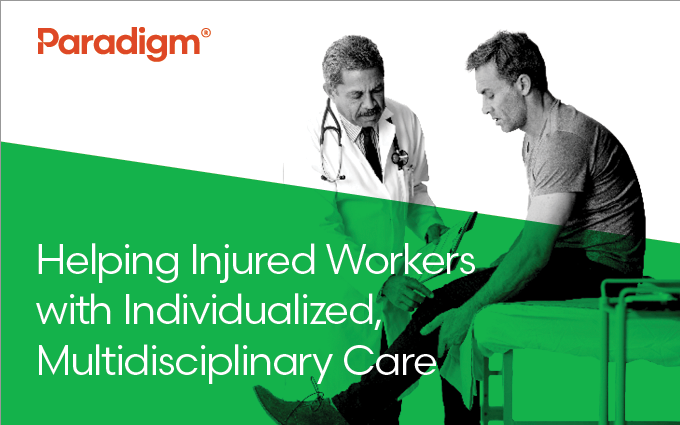09/25/2024

September is Pain Awareness Month. Held by the International Association for the Study of Pain (IASP), this annual observance recognizes and raises awareness around pain, pain management, and the amazing work pain professionals do every day. For 2024, the IASP is focusing on the critical role that individualized, multidisciplinary, and multimodal approaches play in the pain care journey.
In the workers’ compensation space, injured patients managing chronic pain in the aftermath of a work-related injury have a fundamental need for pain care plans suited to their unique circumstances—plans that involve a collaborative, multidisciplinary team. By exploring all viable options, including alternatives to purely pharmacological therapy and addressing behavioral care, pain care providers can better encourage a healthy recovery and a return to productive activity.
In recognition of Pain Awareness Month and the importance of comprehensive multimodal pain care plans, we’re taking a look at non-pharmacological treatments that have received increased attention in the pain management field. Understanding how these techniques fit into the broader pain care picture can help providers, care managers, injured workers, and families work together to overcome chronic pain and achieve the best possible quality of life.
New approaches in non-pharmacological pain management
At its core, the idea of multimodal pain care is built on incorporating multiple types of therapy that work together to effectively manage pain, while reducing certain risks associated with a purely pharmacological plan, including misuse and dependence. There are a growing number of non-pharmacological treatments being incorporated into modern pain management plans. Examples of these techniques include:
When exploring multimodal treatments, an individualized approach is critical. Pain management providers need to find the modes of treatment that are appropriate for each injured patient’s specific diagnosis and injury. Pain specialists should always use an evidence-based approach and proven techniques to help ensure the best possible outcomes for injured workers recovering from pain.
Another key concern that underscores the need for multidisciplinary care is the interrelationship between chronic pain and behavioral health. According to research, mental health conditions and chronic pain can impact and exacerbate one another. For example, people diagnosed with depression or anxiety have been found to be more sensitive to pain, which means that addressing behavioral health is an essential component of pain care that must not be overlooked.
Committed to effective pain care for workplace injuries
Managing chronic pain treatment has become a significant and costly part of the recovery process for workplace injuries. With the help of top providers dedicated to individualized, multidisciplinary, and multimodal approaches, Paradigm offers an array of services designed to meet a wide spectrum of pain care needs.
To lessen the impact of unaddressed behavioral conditions on workplace injury recovery, including chronic pain, Paradigm’s Behavioral Health Clinical Management product delivers structured, goal-based plans that keep injured workers at the center of care. Through an expert-driven interdisciplinary model, evidence-based tools, and relationships with leading providers, this program fosters a transition to self-management with less reliance on chronic pharmacological treatment and professional interventions.
Paradigm’s Comprehensive Pain Management Network brings a carefully curated approach to this historically challenging area. With the industry’s first and largest dedicated network, injured patients gain access to a roster of credentialed clinical pain care providers, while clients receive end-to-end administrative support.
Raising awareness for better pain care
Help Paradigm promote pain awareness throughout September and beyond. You can support the IASP by sharing relevant posts, stories, or your plan to advance multidisciplinary pain management with the #PainCounts hashtag. We also invite you to follow Paradigm and like and share any posts focusing on this important area of injured worker care.
Learn more about Paradigm Behavioral Health Clinical Management product and Paradigm’s Specialty Networks, including our Comprehensive Pain Management Network.